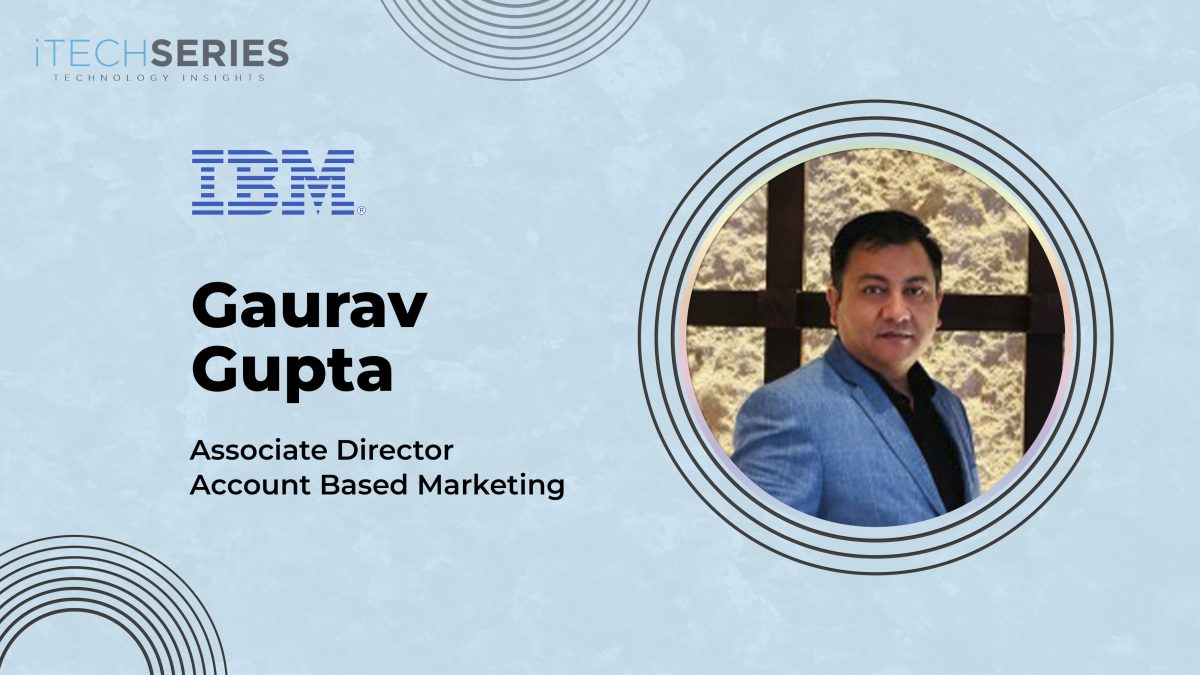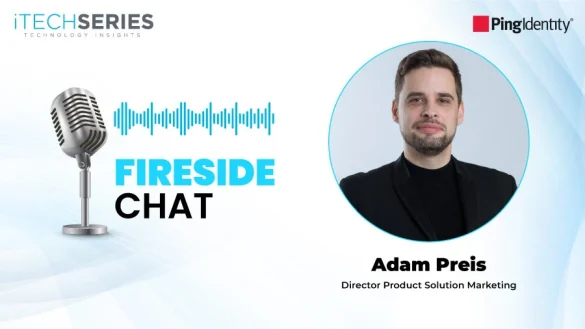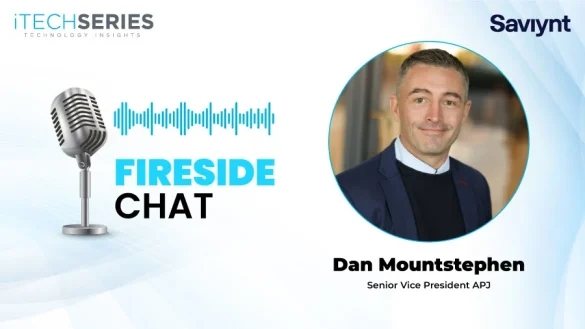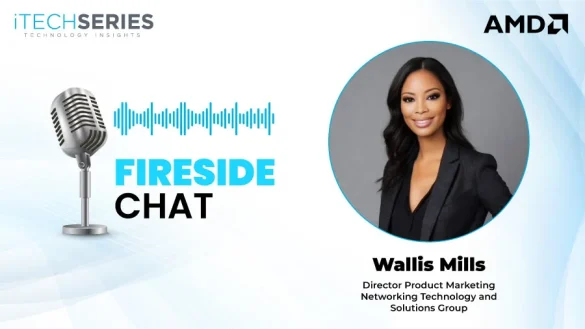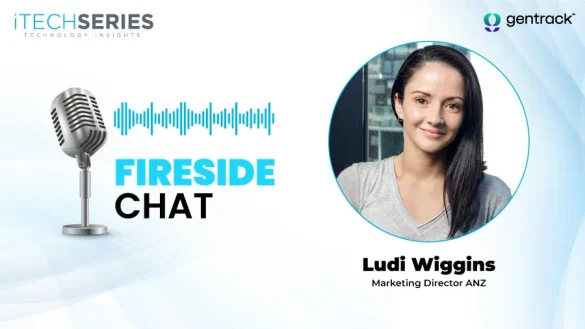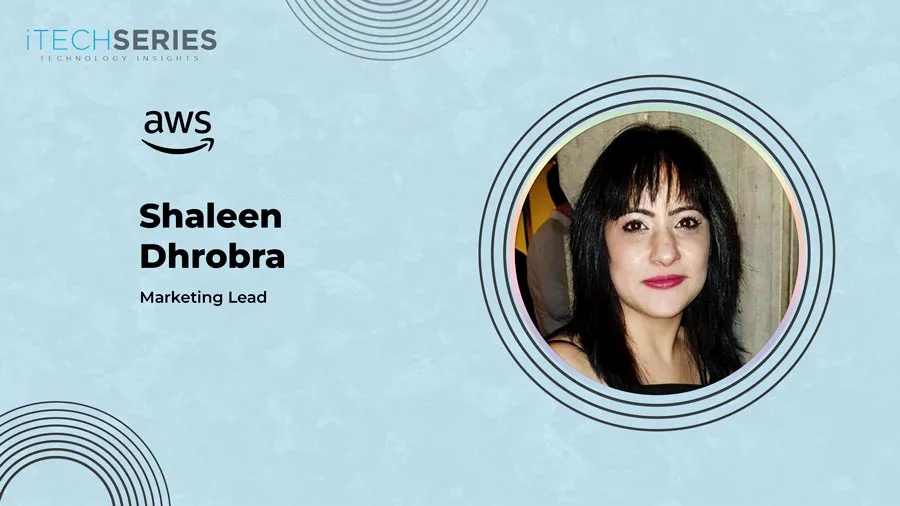Gaurav Gupta, a seasoned marketing leader shares his journey as a go-to-market leader, offering insights into data-driven decisions, ABM, AI integration, and the evolution of strategic marketing initiatives.
Gaurav, it’s a pleasure to have you on the GTM Library. Could you tell us a bit about yourself and your journey in GTM leadership?
Thank you. My journey in GTM leadership spans over two decades, primarily focused on driving strategic growth through innovative marketing and GTM strategies that align closely with business objectives. I’ve had the privilege of working across B2C and B2B segments in advertising agencies, large IT organizations, and various marketing functions. A significant part of my career has been at IBM, where I’ve held several global leadership roles.
Over the course of my career, I have acquired expertise in areas such as strategic planning, product marketing, demand generation, customer experience, and account-based marketing (ABM). I’m particularly skilled in leveraging data analytics to optimize campaigns, increase ROI, and align marketing efforts with business goals.
Throughout my career, I’ve always emphasized data-driven decision-making, strong cross-functional collaboration, and the importance of aligning marketing efforts with broader organizational goals. My leadership approach has been to inspire teams, foster innovation, and always stay focused on delivering measurable business outcomes.
How has working in a revenue-orientated structure shaped your marketing programs?
For any marketing program to be successful, it must be tied to business and revenue growth, either in direct or intangible form. It requires a mindset shift; once you exercise that mindset consistently, you start to view marketing not just as a creative or demand generation function but as a critical driver of revenue. Working in a revenue-orientated structure has fundamentally shaped my approach to marketing programs by instilling a clear focus on measurable outcomes and aligning every initiative with business growth.
First, it has led me to prioritize data-driven decision-making. In a revenue-orientated setup, it’s crucial to track metrics like customer acquisition cost (CAC), lifetime value (LTV), and ROI to ensure every marketing dollar is spent effectively. This approach has helped me fine-tune campaigns for maximum impact.
Second, it has strengthened the alignment between marketing and sales. In this structure, marketing programs are designed to generate high-quality leads and accelerate the sales pipeline, creating a seamless handoff between the two teams. This collaboration ensures that marketing efforts directly contribute to revenue targets.
Finally, it has emphasized the importance of long-term value. While short-term gains are important, a revenue-driven structure pushes you to think beyond immediate results and focus on customer relationships, customer retention, cross-sell opportunities, and driving lifetime value, ensuring sustainable growth for the business.
“For any marketing program to be successful, it is essential that it is tied to business and revenue growth, either in the direct or intangible form”
As a marketing leader, how do you balance data-driven decisions and trying out innovative campaign approaches and channels?
Data should be used as a guide and not a rulebook. I try to use data to understand your audience’s behaviors, preferences, and pain points but don’t rely on it exclusively. Data can reveal patterns, but it often misses the emotional nuances that truly connect with people. While analytics help shape strategy, we need to leave room for empathy and emotional storytelling to create deeper connections with our audience.
Data-driven decisions work best when you pair ‘Agility’ and ‘Emotional Intelligence’ alongside data; it helps in enhancing personalization without making it feel too calculated or robotic. By blending data-driven insights with emotional, humanized content and agile marketing, I have created campaigns that are not only effective but also resonate deeply with our audience. This approach ensures that we are both strategic and empathetic while remaining adaptable and innovative in a fast-changing market.
How do you think account-based marketing (ABM) has evolved from a concept to a strategic imperative?
We have seen significant growth in account-based marketing (ABM) in the last 10-12 years. I have personally been part of two cycles of ABM strategy in my current organization and when I reflect on both cycles, even though the objective has been the same in both cycles, i.e., 3Rs growth (Revenue, Relationship, and Reputation growth), the approach to ABM has dramatically changed from:
- A short-term revenue growth TO long-term value drive approach
- A marketing initiative TO a joint sales and marketing imperative
- A few sets of accounts TO a larger scalable micro-cluster approach
- Understanding an account TO deep understanding of individuals
- Targeting an account TO hyper-targeting individuals within an account
- Single ABM investment TO Tiers of investment strategy
Also, the rise of marketing technologies and platforms plays a crucial role in making ABM more scalable and effective. Tools like machine learning, AI chatbots, customer relationship management (CRM) systems, marketing automation platforms, and advanced/predictive analytics have enabled companies to identify, target, and track key accounts and individuals within those accounts more precisely. The ability to integrate data from different sources, track interactions across multiple channels, and automate personalized content has made ABM feasible on a larger scale.
As a go-to-market leader, how do you gather and leverage customer feedback to inform your marketing decisions?
We gather customer feedback through various sources like the customer advisory board, Net promoter score (NPS) survey, customer interviews, online communities and forums, third-party review platforms, in-person feedback at events and conferences, web analytics, etc., however, the key challenge we face is that there is no single source of truth (SSOT) for customer feedback that marketing can refer to inform our strategy and decision-making. So, we have to reply to the sales team and our own analytics and analyst firms to decipher customer pain points and needs. I believe that a unified view of customer insights that enables more informed, data-driven marketing decisions while ensuring that your strategies remain customer-centric is a must so that we can listen to the market and act accordingly.
Could you tell us about your most challenging yet fruitful go-to-market program?
There are many GTM programs that I have led in my career so far, but one that is close to my heart is HughesNet Fusion growth. Back in 2005, HughesNet Fusion was trying to establish a satellite-based broadband internet network in tier 2 and tier 3 towns in India. Given that India was in the nascent stages of broadband adoption back then, we wanted to grow and strengthen HughesNet leadership in the space, especially where landline-based broadband was hard to reach. There were three key challenges that required our attention. First, we were not known in the market, especially in remote areas of India, so we needed to focus on increasing our awareness in Tier 2 and Tier 3 towns. Second, we weren’t able to scale our reach on our own and needed to identify key people who would make a good business partner and take up HughesNet franchisees. Finally, we needed to ensure that we have a strong desirable portfolio of value-added services on our broadband platform, that could make a profitable business for our franchisees and drive revenue and growth for HughesNet Fusion.
Thus, I conceptualized a three-pronged marketing strategy working in tandem with sales. Firstly, to build awareness, I developed an advertising campaign roping in a significant cricketer of those times as a brand ambassador and launched it into key print publications and TV channels that had reached tier 2 and tier 3 towns in India. The campaign was designed to not only attract internet customers in underserved regions but also appeal to potential business partners by emphasizing the benefits and potential of this hybrid satellite-wireless approach with an aspirational appeal of being the torchbearers of their town.
Secondly, to build our franchisee base, I worked with Sales and an agency to organize a “Bharat Saksham Yatra,” which covered 6 states and 35 key towns that had significant potential and customer base. As part of this ‘Yatra’ we partnered with local panchayats and municipal bodies and held seminars and promotions in local languages in each town to convince potential business partners of the merits of technology, possibilities of partnership, and business model.
Thirdly, I also created a direct outreach campaign to key engineering and management institutes in India that would help them deliver their education programs over satellite broadband to the remotest parts of India, airline/rail/bus ticketing service, online gaming services, video conferencing service, etc.
This GTM campaign was a huge success, we significantly grew our brand awareness, our franchisee base grew from 18 to 2500 franchisees in 6 months, value-added services grew from 2 to 15 in 6 months, and we saw a 500% increase in revenue in a year. Now, we obviously faced many other challenges during the course, but with utter resilience, data-driven decision-making, emotional intelligence, and agile course corrections, we were able to achieve our goals.
How do you approach go-to-market programs for diverse industries, and what key factors do you consider?
“Be Relevant and Be Present” is the mantra here. Each industry brings its own set of uniqueness, e.g. Certain industries like healthcare, banking & finance, and pharmaceuticals operate under strict regulations; retail businesses may struggle with customer retention and e-commerce integration, while manufacturing companies might focus on efficiency and supply chain management.
Thus, in my GTM strategy, we take a nuanced approach that factors in each industry’s specific challenges, customer behavior, competitive landscape, and regulatory requirements. By customizing value propositions, refining messaging, leveraging the right channels, and continuously iterating based on feedback, we develop relevancy in an industry.
Secondly, it is important to be present in channels where the key buyer groups and influencers from those industries go and participate. For example, to target a CIO of a bank, we look at fintech sites, banking, and IT portals vs. Facebook.
Thirdly, it is also important to develop industry contextualization across various buying stages in a customer journey, making sure that your content and touchpoints with the customer are relevant, and connected, and take the customer forward in their buying journey.
From a marketing reporting perspective, how has the shift from tracking vanity metrics (clicks, views, shares) to tracking pipeline and ROI made marketing efforts more meaningful?
In my view, metrics drive ‘behavior’, and every marketing metric provides some level of insight into customer behavior and engagement. In large organizations where we have marketing teams primarily focused on the goal of increasing awareness, their behavior is governed by clicks, reach, views, shares, etc.; however, the marketing team focused on demand generation may look at pipeline and ROI to make decisions.
Having said that, it is important for the leadership team to help align individual goals and metrics in a way that helps individuals see how their goals and KPIs are aligning with the broader business goals and growth. For example, pipeline metrics provide insights into which touchpoints, content, or channels are most effective at driving conversions. Instead of just knowing which blog post or ad got the most views, marketers now track lead nurturing, helping them understand how prospects engage across the funnel and which marketing tactics move them toward purchasing.
In your two decades of experience, what do you consider the most significant changes in marketing strategies?
Over the last two decades, marketing strategies have undergone significant changes, driven primarily by digital transformation, changes in consumer behavior, and the rise of AI. Traditional media like print, TV, and radio have given way to digital platforms such as social media, search engines, and websites. This shift has enabled marketers to reach larger audiences, personalize content, and measure performance more effectively. I still remember a statement made by a senior executive a few years ago; she said, “The last best experience that anyone has anywhere becomes the minimum expectation for the experience they want everywhere.” This shift in consumer behavior has led many organizations to digitally transform their approach to business as well as marketing.
We are again on the cusp of another significant transformation in marketing with the advent of AI. The next 5 years will see “AI-Powered Marketing” in play. We will and in some cases are already seeing usage of AI/machine learning in many marketing areas like customer insights, copywriting, content development, blog/email creation, channel selection, and hyper and automated outreach. ABM will also evolve, becoming more AI-enhanced and data-driven. Companies will use AI to scale ABM efforts by creating hyper-targeted campaigns for high-value accounts at scale, optimizing outreach based on real-time engagement data, and tracking multi-touch attribution more effectively. Soon, marketing functions might even become fully conversational, automated, hyper-targeted, and hyper-personalized with the use of AI. This AI revolution is not only enhancing marketing effectiveness but also driving innovation across the entire marketing function.
Disclaimer – The views and opinions expressed in this interview are solely of the interviewee and do not reflect the views, opinions, or policies of any company or organization the interviewee is affiliated with, past or present. All content provided in this interview is for informational purposes only, and the interviewee makes no representations as to the accuracy or completeness of any information shared. Any reliance you place on such information is strictly at your own risk.
IBM is a leading provider of global hybrid cloud and AI, and consulting expertise. We help clients in more than 175 countries capitalize on insights from their data, streamline business processes, reduce costs, and gain the competitive edge in their industries. Thousands of governments and corporate entities in critical infrastructure areas such as financial services, telecommunications, and healthcare rely on IBM’s hybrid cloud platform and Red Hat OpenShift to affect their digital transformations quickly, efficiently, and securely. IBM’s breakthrough innovations in AI, quantum computing, industry-specific cloud solutions, and consulting deliver open and flexible options to our clients. All of this is backed by IBM’s long-standing commitment to trust, transparency, responsibility, inclusivity, and service.
Gaurav is a results-driven marketer with over two decades of experience crafting innovative marketing strategies across diverse industries. He enhances brand presence and drives revenue growth while leading cross-functional teams. Adept at leveraging data analytics for informed decision-making and campaign optimization. Gaurav specializes in digital marketing, strategic planning, product marketing, account-based marketing, personalized content creation, and demand generation. He is known for his effective communication and collaborative leadership, and his commitment to delivering measurable results and achieving organizational goals.

